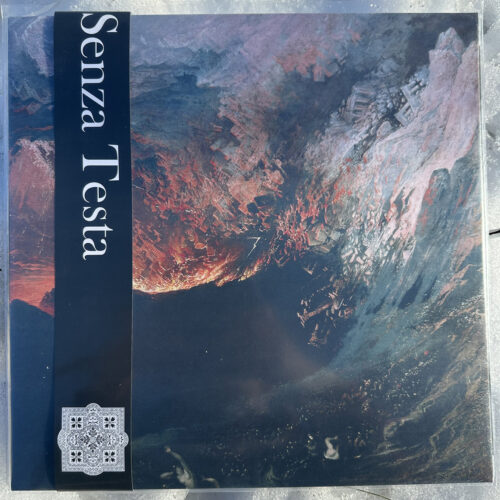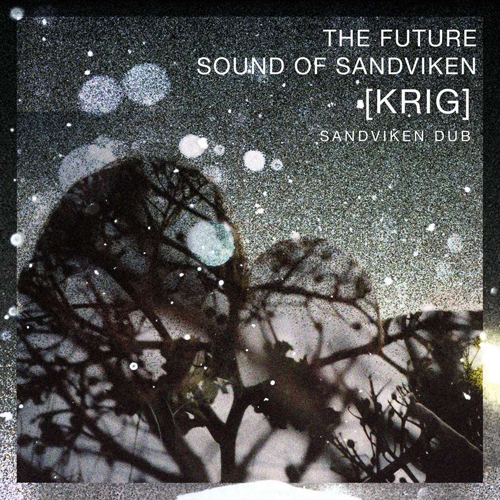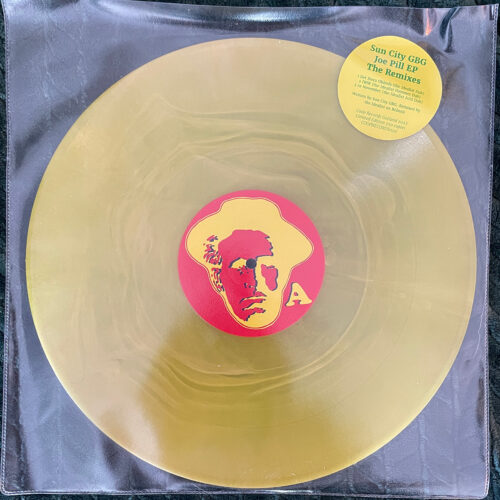Subtotal: €25,00
Andreas Tilliander & Goran Kajfeš – In Cmin LP
€24,00 (Outside EU: €19,20)
Dub and experimental ambient from Andreas Tilliander & Goran Kajfeš via Kontra Musik (Audio sampler from a digital source)
Audio PlayerAvailability: In stock
Title: In Cmin
Format: Vinyl 12″
Label: Kontra Musik
Cat nr: km060
Genre: Ambient/Dub/Experimental
Tracklist:
| A1 | Montes Caucasus | |
| A2 | More Than Worlds | |
| A3 | Minor Sea | |
| A4 | Nef Argo | |
| B1 | Moon Of Eris | |
| B2 | Bending Things | |
| B3 | Moss | |
| B4 | Twozerozerofive |
“Moonlight is sculpture; sunlight is painting,” wrote the American author Nathaniel Hawthorne in 1838. Even in 2025, there seems to be something uniquely captivating about the moon. The jazz-ambient soundscapes sculpted by Andreas Tilliander and Goran Kajfeš on their album In Cmin are darkly shadowed; tinted with a silvery light reminiscent of a night where the cloud veils slowly drift past a brilliant full moon. It’s no coincidence that both sides of the vinyl open with references to the moon—or, to be more precise, two disparate moons.
Side A begins with a journey along Montes Caucasus, the lunar mountain range on the moon’s northeastern edge, whose highest peaks rise 6,000 meters above the surrounding seas of moon dust. Andreas Tilliander’s evocative TB-303 basslines and echo-laden sonic details create a mood that is as warm as it is desolate, forming a perfect backdrop for Goran Kajfeš’s flute melodies to soar. This marks one of the first times Kajfeš puts down his trumpet in favor of a metallic flute, which he recently uncovered from his late father’s belongings.
On Side B, Tilliander and Kajfeš take the listener even deeper into space—to Dysnomia, the Moon of the dwarf planet Eris. Both Eris and Dysnomia draw their names from Greek mythology: Eris, the goddess of discord, who triggered the Trojan War, and her daughter Dysnomia, the personification of lawlessness and anarchy. Around the six-minute mark of this roughly eight-minute piece, the steady electronic pulses seem as though they are teetering on the verge of anarchic collapse, until a glimmering jazz trumpet pierces through the fragmented sounds, pulling the music in a more harmonious direction.
Across eight tracks, Tilliander and Kajfeš masterfully balance slow, lumbering machine pulses, delicate synth textures, and impeccable trumpet lines. Tilliander’s use of both analog and digital synths carve out the structure of these sonic sculptures, while Kajfeš’s elegant trumpet playing pushes against them, infusing the dreamy soundscapes with both acoustic tension and melodic detail.
Individually, Andreas Tilliander and Goran Kajfeš have long been recognized as leading names in Swedish electronic music and jazz, respectively. Both have consistently pushed and transcended the boundaries of their genres. Tilliander has explored everything from techno, drones, and dub to clicks’n’cuts under monikers like TM404 and Mokira. Kajfeš has been a relentless innovator in jazz, playing a central role in bands such as Oddjob, Subtropic Arkestra, Tropiques, Nacka Forum, and Fire! Orchestra.
Now, they join forces, forging a new path for both ambient and jazz music.
The album’s title, In Cmin, is a nod to minimalist composer Terry Riley and his groundbreaking piece “In C”. It also reflects the aesthetic challenge behind the album as much of the music is composed in C minor—forcing Kajfeš to push the boundaries of his improvisational palette. Despite sounding meticulously composed, the album grew out of lengthy improvisational sessions in the studio.
The closing track, “Twozerozerofive” looks back 20 years. In 2005, Andreas Tilliander and Goran Kajfeš each received a Grammis award—Tilliander for his most dance-oriented album to date, “World Industries” and Kajfeš for “Headspin”, an exploration of jazz and fusion. Both albums marked significant milestones in the history of modern Swedish music. But perhaps the most important moment of that evening was the conversation between Tilliander and Kajfeš at the Grammys afterparty, where the idea of collaborating first surfaced. Twenty years later, the outcome of that moment is finally here: In Cmin. Neither jazz nor ambient music will ever be the same again.

 Senza Testa - Pralaya LP (Molted rock vinyl)
Senza Testa - Pralaya LP (Molted rock vinyl) 










